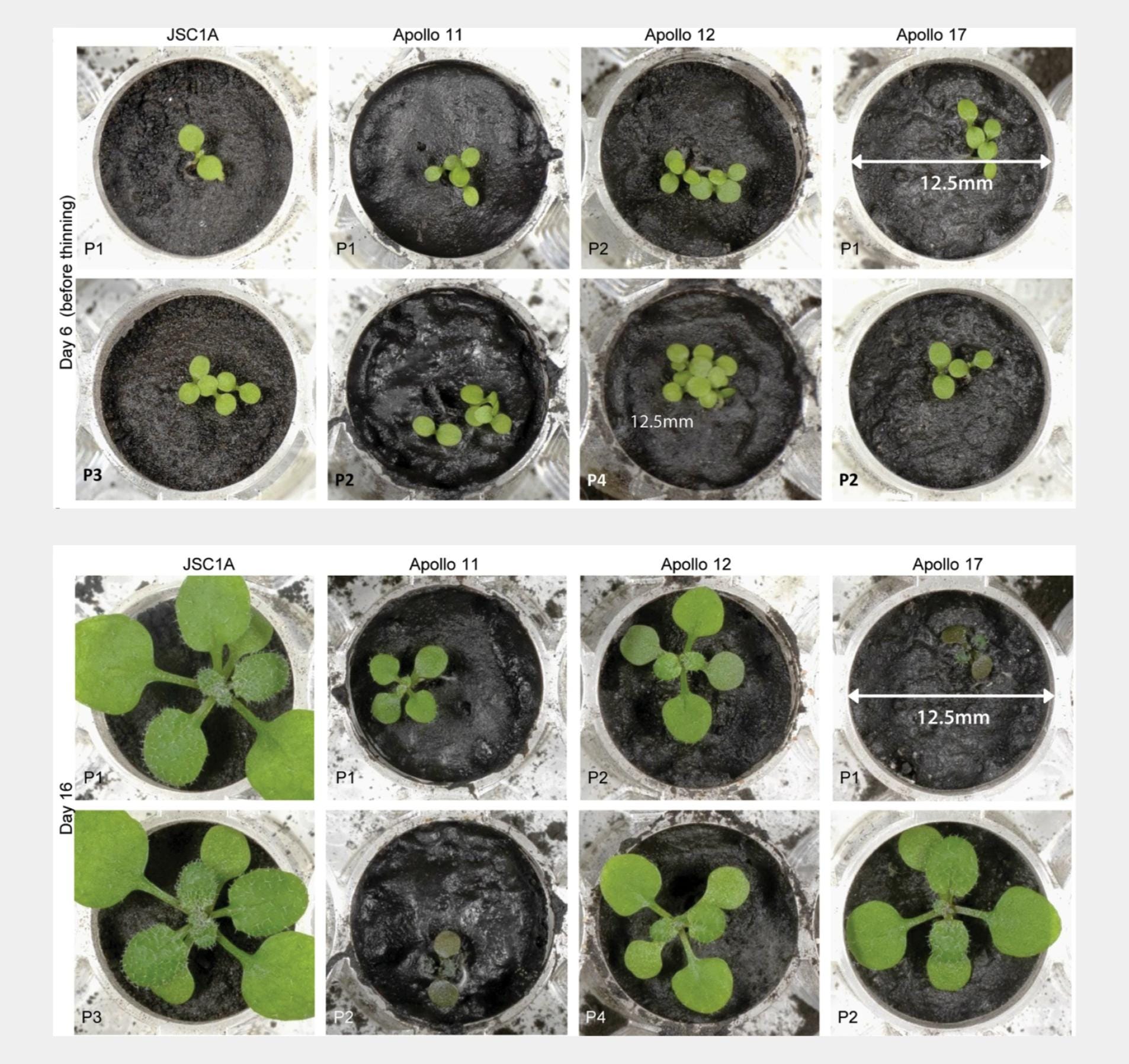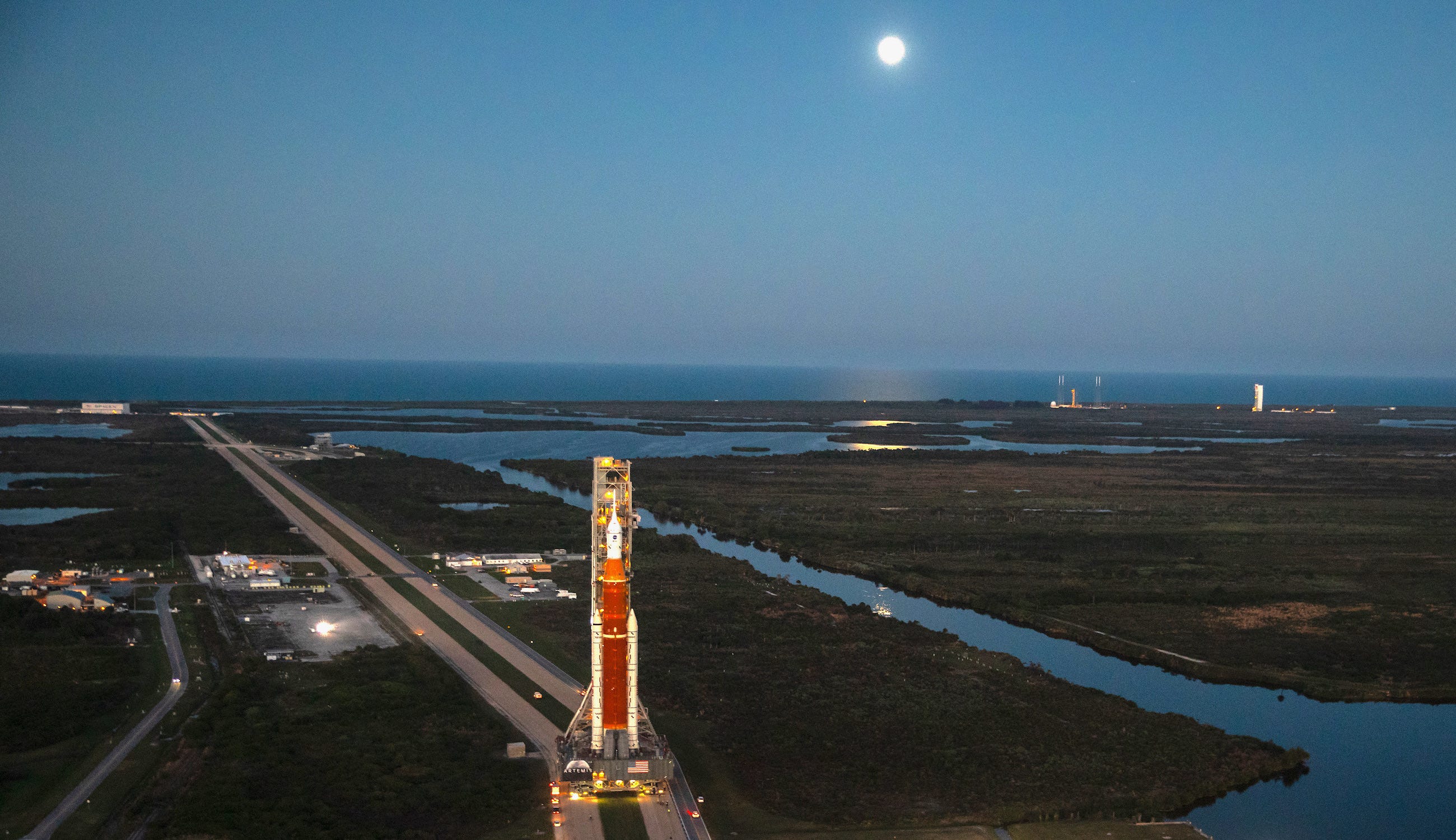Moon Monday #77: Lunar soil plants, growing international synergy, more SLS fixes, and other lunar updates
Plants grow in lunar soil, but barely like it
For the first time ever, researchers have successfully grown plants in lunar soil, particularly in several samples from Apollo 11, 12 and 17 missions. The plants weren’t as healthy as the control group plants were in lunar soil simulants made from terrestrial volcanic ash, chosen so as to mimic the volcanic plains of the landing sites of each of those Apollo missions. Plants grew differently even among the Apollo samples, notably most poorly in soil from Apollo 11.

This experiment rooted in real lunar soil has implications for how we plan to sustain future astronauts and habitats on the Moon and beyond. It hints that even soil from broadly similar lunar regions can show wide variations in plant growth levels. Post-experiment, scientists performed RNA sequencing to identify the patterns of genes expressed by each plant, and are studying them to understand which genes enable better plant growth. Less noticeably but just as importantly, the growth differences between lunar-soil-grown plants and the control group ones yet again reminds us of the low fidelity of our lunar soil simulants. Without it, we can’t adequately test the trove of technologies we’re building for the Moon or any other world.
Related: NASA published an extensive document last year to standardize methods and protocols to test Moonbound materials against the notoriously sticky and harmful lunar dust. This Technical Standards document includes guidance for preparing, handling, and testing lunar soil simulants in labs. This move will help efficiently test new lunar technologies, instruments, materials, and components. While the document currently only covers the lunar environment, given the immediate needs of Artemis missions, more planetary environments will be included in future revisions.
NASA tightens its grip on SLS
NASA is progressing well in preparing the SLS rocket to head back to the launchpad by end of May for a hopefully successful wet dress rehearsal test this time around. In addition to tightening flange bolts on the tail mast umbilical of the rocket’s mobile launcher to prevent a hydrogen leak, engineers have relocated a gas contaminant filter on the umbilical to also dismiss it as a possible leak source. They conducted checks at ambient temperatures and found no leaks although only the cryogenic fueling during the rehearsal next month will tell us if the issue is truly resolved.
Engineers also found a damaged O-ring to be the source of the piece of rubber in the helium check valve on the rocket’s second stage, and have replaced all the related hardware leading up to the valve. Next, the engineers will re-pressurize the second stage to test the replaced hardware. In the meanwhile, the launchpad’s gaseous nitrogen supplier has completed required upgrades to its facility. If SLS’s upcoming wet dress rehearsal proceeds smoothly, we will get to see the big orange rocket lift the Artemis I Moon mission in August at the earliest.

Colombia signs the Artemis Accords
On May 10, Colombia signed the Artemis Accords for cooperative lunar and space exploration. Colombia is the 19th nation to join the Accords and the third from Latin America after Brazil and Mexico.
Mexico already has a Moon mission planned—five tiny autonomous rovers collectively called COLMENA to be deployed by Astrobotic’s first lunar lander later this year as part of NASA’s CLPS program—whereas Brazil and Colombia have signed the Accords hoping to kickstart their exploration of our Moon. Payload Space reports that Brazil has started thinking about consistent, medium- and long-term contributions to global lunar exploration and Artemis in particular.
More Moon
- SpaceNews reports that Canoo Technologies may not have enough cash to build their next-generation, all-electric vans chosen by NASA to transport Artemis astronauts. The company says it intends to start full-scale production of its Gamma vehicle—on which the Artemis van is to be based—later this year if they raise enough funding to remain in operation.
- NASA says the $10 million CAPSTONE spacecraft, built by Advanced Space, will now launch no earlier than May 31. The mission intends to prove the feasibility of the unique fuel-saving elliptical lunar orbit that the NASA-led Gateway station will be in later in the decade.
- Alexandra Witze has a nice overview of the $93-billion plan to put astronauts back on the Moon, complete with its hopes and challenges.
- ESA has a published a very nice interactive site for people at large to explore our Moon.
- Fun with serious SLS rocket headlines
Thank you Epsilon3 for sponsoring this week’s Moon Monday.
